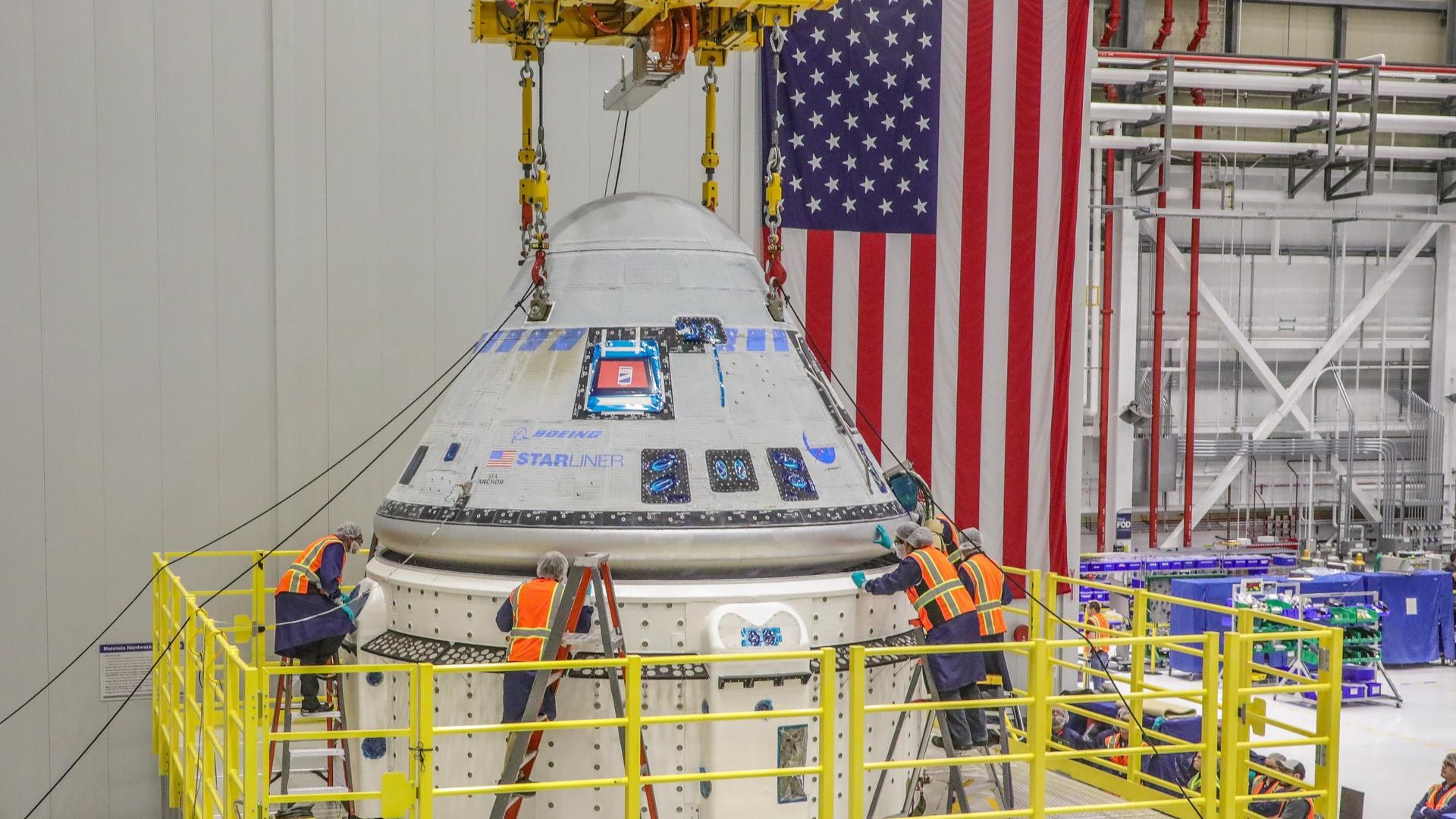Boeing delays 1st Starliner astronaut mission again, targets July 21 liftoff

The first crewed flight of Boeing's Starliner astronaut taxi has been pushed back several additional months, with liftoff now targeted for July 21 at the earliest.
Last month, Boeing and NASA said that Starliner's astronaut debut, a mission to the International Space Station (ISS) called Crew Flight Test (CFT), was on track to launch in April.
That timeline was pushed back a bit last week, when NASA officials said that CFT will lift off after Ax-2, a private flight to the orbiting lab operated by Houston company Axiom Space that's tentatively targeted for early May.
But a spring liftoff for CFT is now off the table, agency officials announced today (March 29).
"We've deliberated and decided that the best launch attempt is no earlier than July 21 for CFT," Steve Stich, manager of NASA's Commercial Crew Program, said during a press conference today.
Related: Starliner: Boeing's next-generation spaceship for astronauts
Stich and others on today's call cited several reasons for the latest delay. There will be considerable traffic at the ISS this spring, for example, with Ax-2 lifting off in May and SpaceX's next robotic cargo mission targeted for June.
Breaking space news, the latest updates on rocket launches, skywatching events and more!
CFT's launch site, Cape Canaveral Space Force Station in Florida, will be busy over the coming months as well. United Launch Alliance (ULA) plans to fly a mission for the U.S. Space Force from Cape Canaveral with an Atlas V rocket this spring, and the first-ever liftoff of the company's new Vulcan Centaur vehicle is targeted for May from the site. (CFT will employ an Atlas V as well.)
NASA also wants a bit more time to analyze data about Starliner's various components, such as its parachute system, before putting astronauts on the vehicle, Stich said. And the agency and Boeing plan to conduct one more ground test of a parachute subsystem — the chute that pulls off Starliner's forward heat shield. That trial is targeted for May, Stich said.
"At this time, there's really no issues or concerns with the parachute system," Stich said. "The parachutes are installed in the vehicle; they're in good shape. It's just a matter of going through all that data and looking at the data and making sure we're really ready to go fly safely."
CFT will send NASA astronauts Butch Wilmore and Suni Williams to the ISS for a roughly eight-day stay. If all goes well with the test flight, NASA will likely certify Starliner for operational astronaut missions to the orbiting lab.
One private American spacecraft is already performing these crewed taxi missions — SpaceX's Crew Dragon, which earlier this month launched on its sixth contracted astronaut flight to the ISS for NASA.
CFT will mark Starliner's second trip to the ISS. The capsule spent about a week docked to the ISS in May 2022, on an uncrewed mission called Orbital Flight Test 2.
Mike Wall is the author of "Out There" (Grand Central Publishing, 2018; illustrated by Karl Tate), a book about the search for alien life. Follow him on Twitter @michaeldwall. Follow us @Spacedotcom, or on Facebook and Instagram.

Michael Wall is a Senior Space Writer with Space.com and joined the team in 2010. He primarily covers exoplanets, spaceflight and military space, but has been known to dabble in the space art beat. His book about the search for alien life, "Out There," was published on Nov. 13, 2018. Before becoming a science writer, Michael worked as a herpetologist and wildlife biologist. He has a Ph.D. in evolutionary biology from the University of Sydney, Australia, a bachelor's degree from the University of Arizona, and a graduate certificate in science writing from the University of California, Santa Cruz. To find out what his latest project is, you can follow Michael on Twitter.

